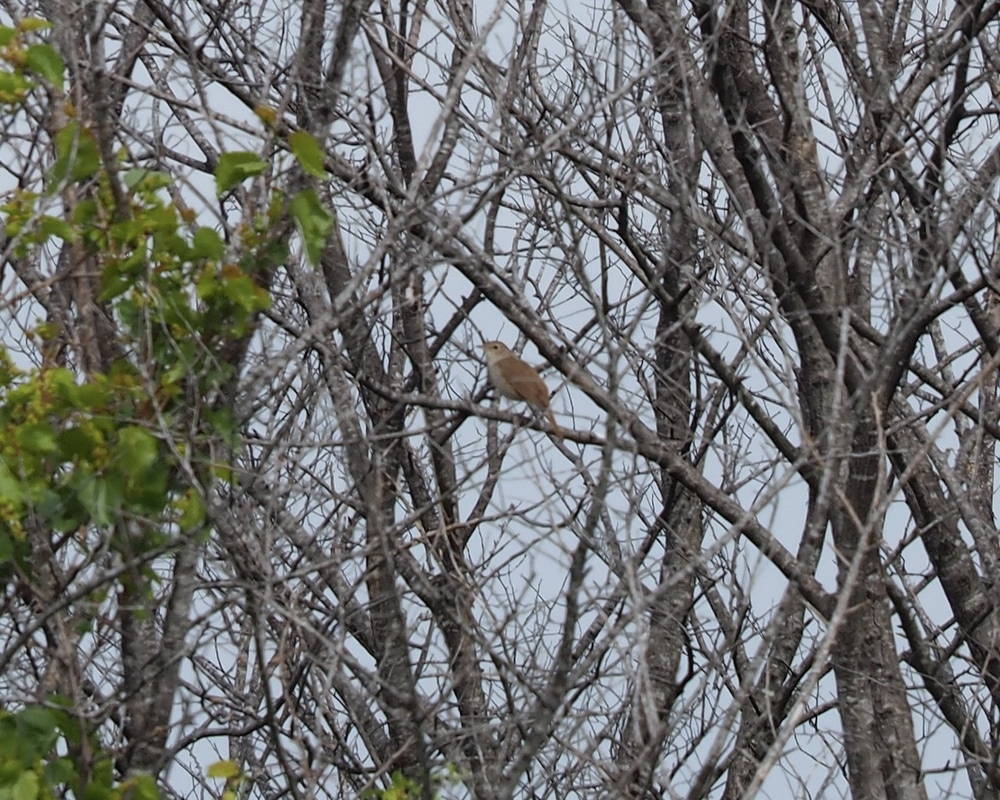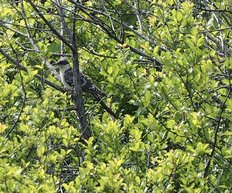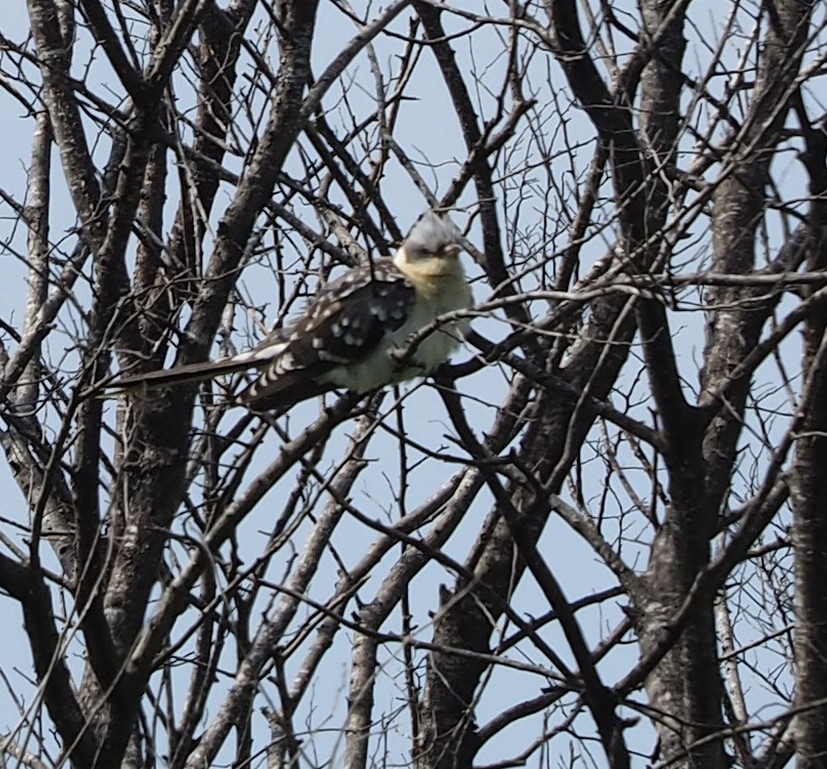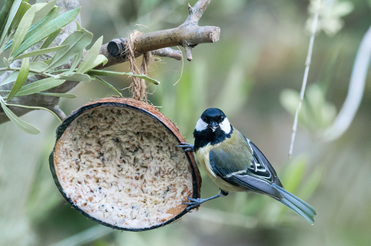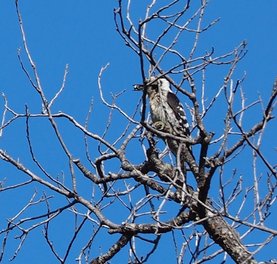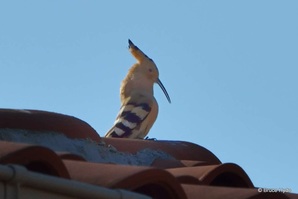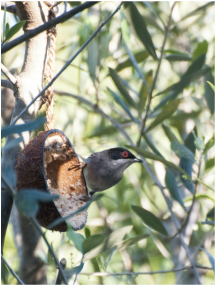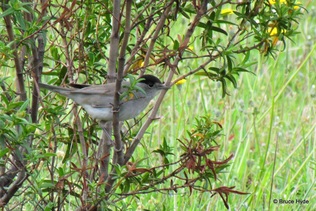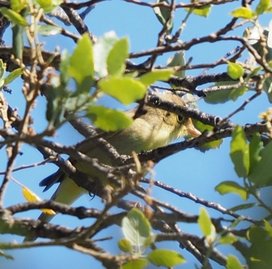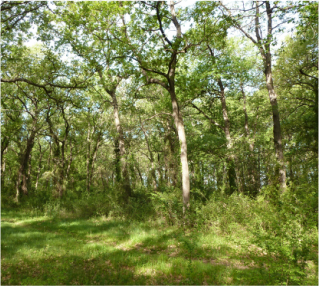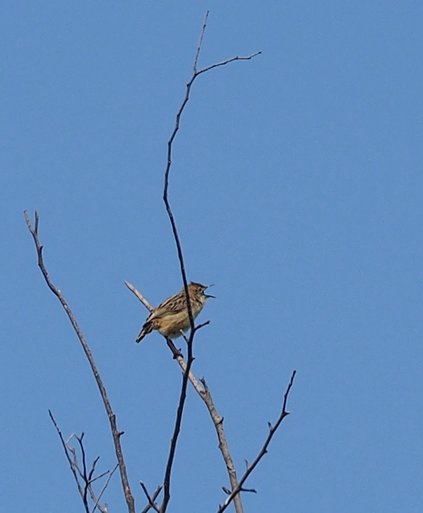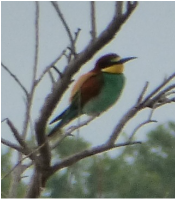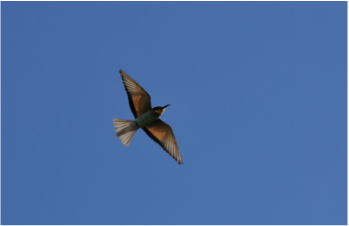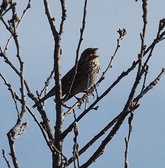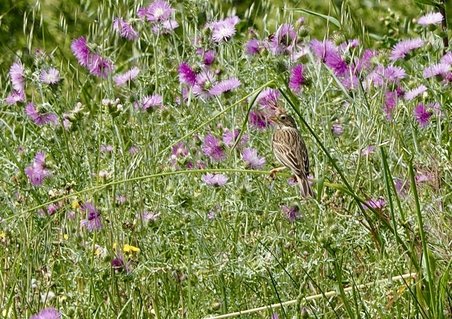BIRDSONG
Welcome to our growing library
Click on videos for song and a picture of the bird or its habitat
Or click on the arrow on soundtrack if there is no video yet
Click on videos for song and a picture of the bird or its habitat
Or click on the arrow on soundtrack if there is no video yet
Is there a more uplifting sound than this in the natural world?
|
Nightingale Rossignol philomèle Luscinia megarhynchos
A bird renowned for being hard to spot (and even harder to photograph!). Its loud, liquid song more than makes up for its small size (barely bigger than a sparrow) and drab appearance. Such a rich repertoire, as demonstrated in this recording. In these parts you hear them more in the day than at night.
|
Great Spotted Cuckoo Coucou geai Clamator glandarius
This big, impressive summer visitor breeds in southern France (as well as Spain and Portugal) but is generally classed as rare in Europe. Well named in Latin - it does make a clamour! The bird in the clip below is sitting quietly but has raucous friends close by (accompanied at times by a fan-tailed warbler and nightingale). They sound nothing like the cuckoo we're familiar with in Europe.
This big, impressive summer visitor breeds in southern France (as well as Spain and Portugal) but is generally classed as rare in Europe. Well named in Latin - it does make a clamour! The bird in the clip below is sitting quietly but has raucous friends close by (accompanied at times by a fan-tailed warbler and nightingale). They sound nothing like the cuckoo we're familiar with in Europe.
|
Wryneck Torcol fourmilier Jynx torquilla
For such a tiny woodpecker, this bird makes a big noise - usually from the tree or branch you can't quite see. They love the cork and holm oaks of the Albères. Lots pass through on migration, but some stay around and breed in the area. |
|
|
Great Spotted Woodpecker
Pic épeiche Dendrocopos major This common woodpecker usually makes a loud, explosive tchik! - similar to a blackbird's alarm call - but in this recording, several woodpeckers in dispute make a fast, chattering rattle of alarm. |
|
Lesser Spotted Woodpecker Pic épeichette Dendrocopos minor
The Pyrenees are at the southern edge of the main territory for this, the smallest woodpecker. It's rather more drab than its larger pied cousin, lacking the bold white shoulder patches. Males have red caps but no red on the nape of their necks or under the tail. Females have no red anywhere. Although classed as common in the Mediterranean Pyrenees, it seems more elusive than the Great Spotted. A single tchik call can easily be mistaken for the Great Spotted if you can't see the bird. But, as at the end of the recording below, the Lesser Spotted also winds itself up into a rapid burst of tchiks, slightly reminiscent of the Wryneck. |
Lesser Spotted Woodpecker from Lesley McLaren on Vimeo.
|
|
Woodlark Alouette lulu Lullula arborea
These short-tailed larks are most vociferous in spring and again in early autumn, with a lovely descending trill - but they seem to sing whenever the sun shines. They also seem to prefer open vineyards to woodland. (About halfway through, if you think you can also hear starlings, they are red legged partridge, running through the vines.) |
|
The Joys of Spring!
Plenty of birds in fine voice one morning in early May - attracting mates, claiming territories, and perhaps (apart from the pigeon) simply celebrating their survival of another migration. Wryneck Torcol fourmilier Jynx torquilla
Wood Pigeon Pigeon ramier Columba palumbus Turtle Dove Tourterelle des bois Streptopelia turtur Hoopoe Huppe fasciée Upupa epops Golden Oriole L'Oriot d'Europe Oriolus oriolus Blackcap Fauvette à la tête noir Silvia atricapilla |
But you may have to go no further than the garden to hear how busy (or buzzy) everyone is. House Sparrow Moineau domestique
Passer domesticus And there's that oriole again! |
|
Great Reed Warbler Rousserolle turdoïde Acrocephalus arundinaceus In 12 years, I've only heard one of these, singing from deep cover in reeds on a pond - behind the oleander in this still video. I never did see it. My book says to look out for a thrush-sized bird, which - for a warbler - is giant. Its raucous song competes well with the traffic on the main road a couple of hundred metres away. And what a song! It always makes me laugh. |
|
|
Sardinian Warbler Fauvette mélanocéphale Sylvia melanocephala
The RSPB bird book describes this warbler's voice as a "loud, hard, short call and frequent fast, hard rattle, krr-rr-rr-rr-rr-rr-rr-rr-t; song fast, unmusical, rattling chatter with calls interspersed." That's the dominant sound in this recording - with other noisy birds in the background. |
|
Blackcap Fauvette à la tête noire Sylvia atricapilla
A pretty song that seems to come from nearly every tree and bush in summertime - but the singer is elusive among the leaves. Physically, the most striking difference between this and the Sardinian warbler above, is the lack of red ring around its eye. |
|
Melodious Warbler Hypoläis polyglotte Hippolais polyglotta
My RSPB book describes this yellow and green warbler's song as a "fast, rambling, not very accomplished warble", which seems a little unkind. Despite singing only a few feet away from me in the clip below, the bird was impossible to spot in the foliage. Other species are calling all around, and you'll hear the melodious warbler start at about 6 seconds in, with a churring rattle, followed by the warble, which dominates the recording at about the 15-second mark. |
Melodious warbler from Lesley McLaren on Vimeo.
Cirl Bunting Bruant zizi Emberiza cirlus
A little bigger than a sparrow, the male is brighter yellow than the female. The black eye-stripe and chin of his summer plumage easily distinguishes him from a yellowhammer. They love grasshoppers but if those and other insects are scarce, they will eat seeds. Their habitat is therefore "unimproved" grassland as well as areas with trees (eg. orchards) and thickets.
A little bigger than a sparrow, the male is brighter yellow than the female. The black eye-stripe and chin of his summer plumage easily distinguishes him from a yellowhammer. They love grasshoppers but if those and other insects are scarce, they will eat seeds. Their habitat is therefore "unimproved" grassland as well as areas with trees (eg. orchards) and thickets.
Cirl Bunting Song from Lesley McLaren on Vimeo.
Green Woodpecker Pic vert Picus viridis
Often described as having a laughing call - or a "yaffle" -
they're as happy picking ants off the ground as off the trees.
Often described as having a laughing call - or a "yaffle" -
they're as happy picking ants off the ground as off the trees.
Blackbird Merle noir Turdus merula
Such a melodious song - the perfect accompaniment to a relaxing, cool glass of wine in the garden, early evening.
But if danger's about, they sound the alarm, as in the second recording.
Such a melodious song - the perfect accompaniment to a relaxing, cool glass of wine in the garden, early evening.
But if danger's about, they sound the alarm, as in the second recording.
|
|
|
Song Thrush Grive musicienne Turdus philomelos
Well named in every language - its voice is arguably even more musical than the blackbird's. This one is rudely interrupted by a wryneck or two! |
Raven Grand corbeau Corvus corax
Largest of the crow family, the 'cronk' of this one can be heard about 20 seconds into the recording.
Largest of the crow family, the 'cronk' of this one can be heard about 20 seconds into the recording.
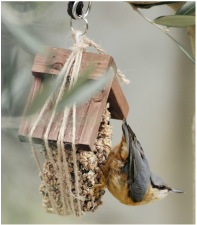
Nuthatch Sitelle torchepot Sitta europaea
This smart bird is abundant throughout the Albères - the oak forest providing an ideal habitat.
Its repeated "chwit chwit chwit" is the dominant call in this recording.
They are especially partial to peanuts!
This smart bird is abundant throughout the Albères - the oak forest providing an ideal habitat.
Its repeated "chwit chwit chwit" is the dominant call in this recording.
They are especially partial to peanuts!
|
Fan-tailed Warbler Cisticole des joncs Cisticola juncidis
With a wingspan between 12 and 15cm and weighing in at 10g, this must be one the smallest warblers. The book describes its song as "a repetition of a single, sharp, penetrating note given with each bound of a deeply undulating song-flight." That repetition can get quite irritating after a while. |
Golden Oriole L'Oriot d'Europe Oriolus oriolus
Here he is again! It's impossible to tire from such a tropical sight and sound.
There are several calling in the video below.
Mixed in with that liquid flutey song are the more wheezy zheeee sounds.
(And a crow is adding his two centimesworth, in the background.)
Scroll down for a fine imitation by a starling.
Here he is again! It's impossible to tire from such a tropical sight and sound.
There are several calling in the video below.
Mixed in with that liquid flutey song are the more wheezy zheeee sounds.
(And a crow is adding his two centimesworth, in the background.)
Scroll down for a fine imitation by a starling.
Bee eaters showing off from Lesley McLaren on Vimeo.
|
Starling Etourneau sansonnet Sturnus vulgaris
Such great mimics of other birds. Here's a selection - some calls are more easily recognisable than others, mixed in with whistles and clicks that may be all their own. |
|
Corn Bunting from Lesley McLaren on Vimeo.
